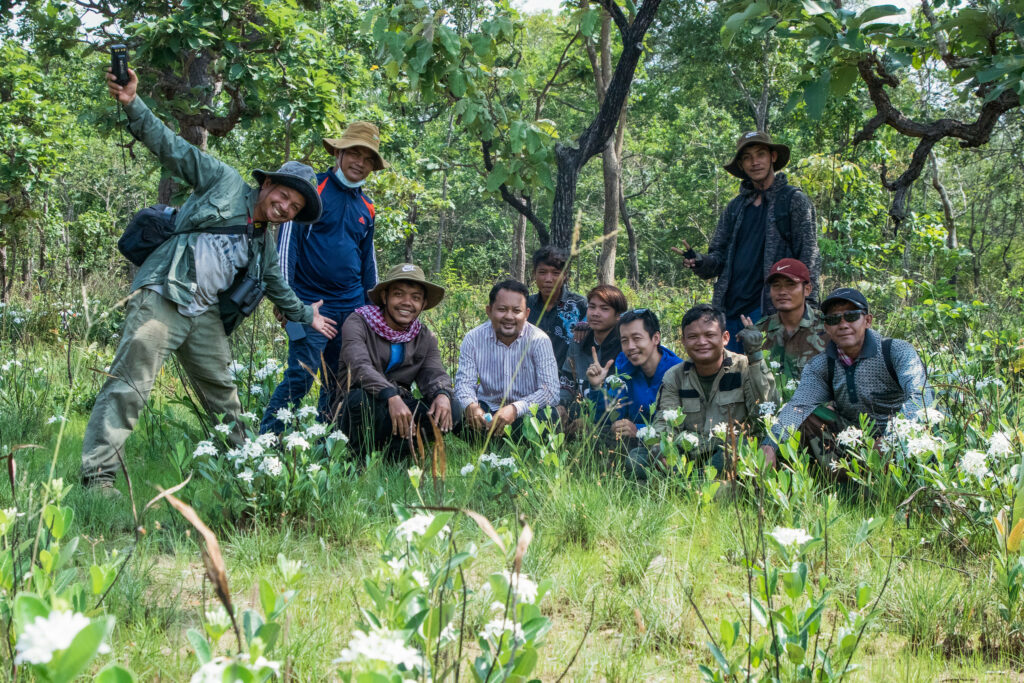
Every conservation project represents a valuable opportunity for learning. With each effort that implements on-the-ground actions to conserve or restore biodiversity comes the chance to critically evaluate project successes and shortfalls, to learn what works well, and to identify impacts that may not even have been initially considered. However, this kind of learning requires targeted monitoring not only to detect changes that occur during a project, but also to verify those changes are due to the project itself. This kind of monitoring isn’t always the kind of flashy, charismatic work often associated with international conservation projects, but it is crucial for understanding whether projects are truly achieving their objectives. Fortunately, funding organizations like the Critical Ecosystem Partnership Fund (CEPF) recognize the importance of project evaluations for ensuring that their conservation investments have the largest possible positive impact on biodiversity, human well-being, and civil society. This recognition prompted CEPF to engage FISHBIO in an independent evaluation of multiple projects that they are funding in Cambodia, all of which are focused on the improved management and conservation of freshwater resources.
In the summer of 2020, CEPF funded 14 different freshwater-focused projects throughout the lower Mekong watershed in Cambodia. This region falls within the Indo-Burma Biodiversity Hotspot, an area of remarkable biodiversity that is facing considerable threats from factors like dam construction, agro-industry expansion, and climate change. CEPF has ramped up their funding efforts in this hotspot, and this recent round of projects covers a diverse array of objectives, from increasing youth involvement in natural resource management to reintroducing locally extinct species. In the interest of collecting objective, concrete data to assess the impacts of these projects on the ecosystems and communities where they were focused, FISHBIO collaborated with fisheries biologist Dr. Vittoria Elliott from the Smithsonian Institution and social scientist Dr. Joanne Millar of Charles Sturt University to develop a framework for project evaluation. Over the past two years, FISHBIO has been working to apply this framework to a subset of six of the CEPF-funded projects in Cambodia.

The assessment consists of three components: 1) an ecological evaluation focused on assessing biodiversity impacts, 2) a civil society evaluation focused on evaluating the capacity of the grantee organizations and their local partner organizations, 3) and a community evaluation focused on evaluating impacts to human well-being where the projects are taking place. Each of these components has been carefully designed to maximize the ability to detect changes and relate them back to project activities. For example, the ecological evaluation consists of both baseline and endline field surveys. These surveys implemented scientific sampling methods, such as experimental gill nets and environmental DNA, as well as the gears of local fishers to capture the greatest proportion of biodiversity possible. They were also designed to target both areas where project activities are taking place – such as newly established no-take zones – and areas without project activities to serve as a control for comparison. Similarly, the civil society evaluation was designed to delve into the capacities of each organization through in-depth interviews, and to obtain more nuanced information on their strengths and needs, including those that may have been missed by the standard CEPF tracking tools. Finally, the community surveys targeted a diverse cross-section of the project communities in an effort to gain a more complete understanding of the ways in which different groups have – or have not – been impacted by project activities.

With invaluable assistance from the Cambodian group Young Eco Ambassadors, FISHBIO was able to remotely coordinate baseline surveys in 2021 despite COVID pandemic-related travel restrictions, and these surveys were recently repeated for the collection of endline data in the spring of 2022. The FISHBIO team and project partners are currently reviewing and analyzing the extensive baseline and endline data on fish communities and habitat, human communities, and grantee capacity, and are working to identify successes, shortfalls, and suggestions for future directions for both CEPF and each of the individual grantee organizations. Historically, funding organizations have too often focused their attention on the completion of short-term activities at the expense of the monitoring necessary to effectively determine whether these activities achieved their objectives or not. Intentionally implementing monitoring and evaluation makes it possible to iteratively incorporate lessons learned from past projects in an adaptive approach to project management. The ongoing CEPF evaluation represents an excellent opportunity to inform conservation approaches in Cambodia, and the framework created for this effort may be used to move towards effective adaptive management elsewhere in the Mekong Basin and beyond.